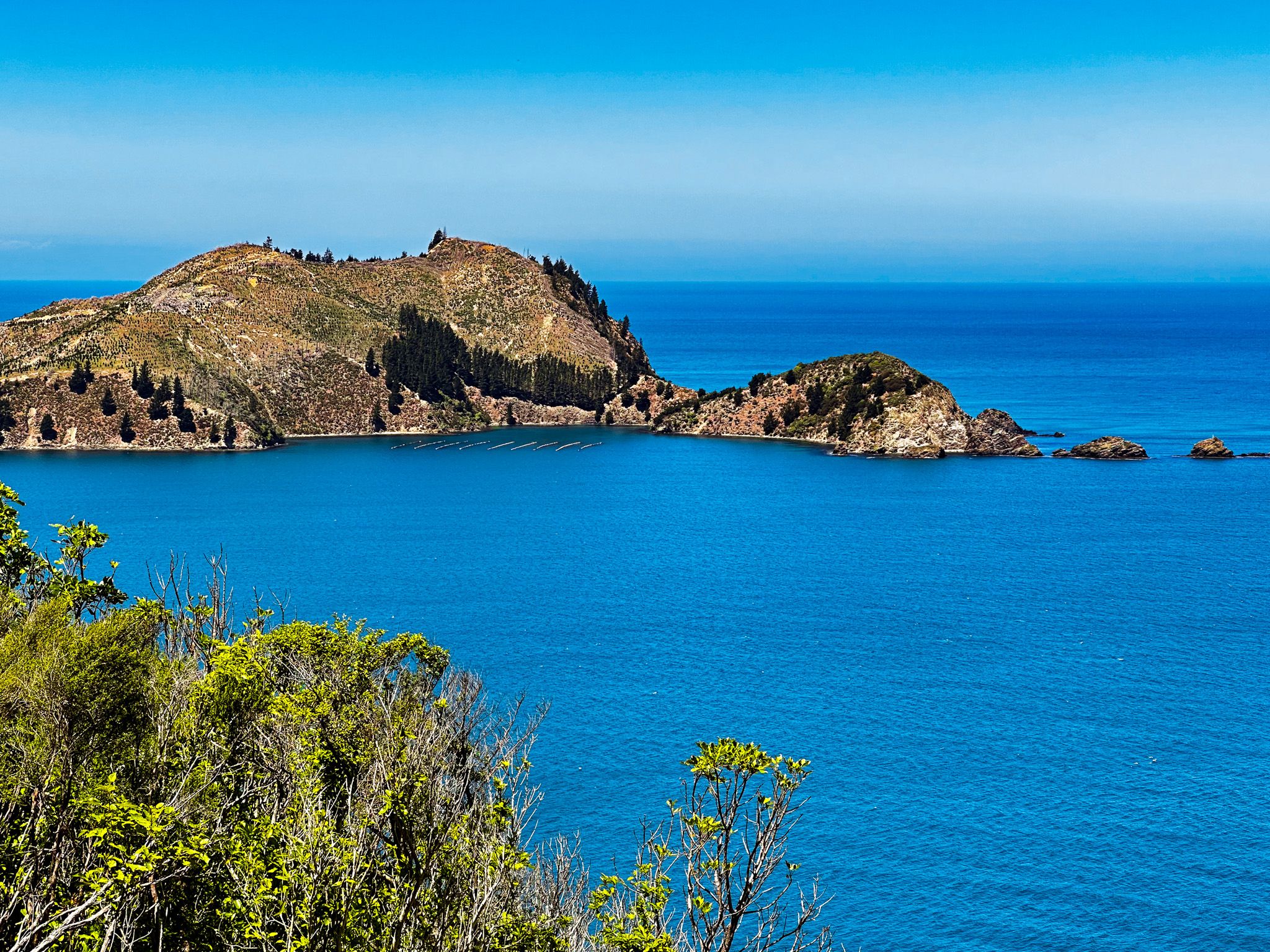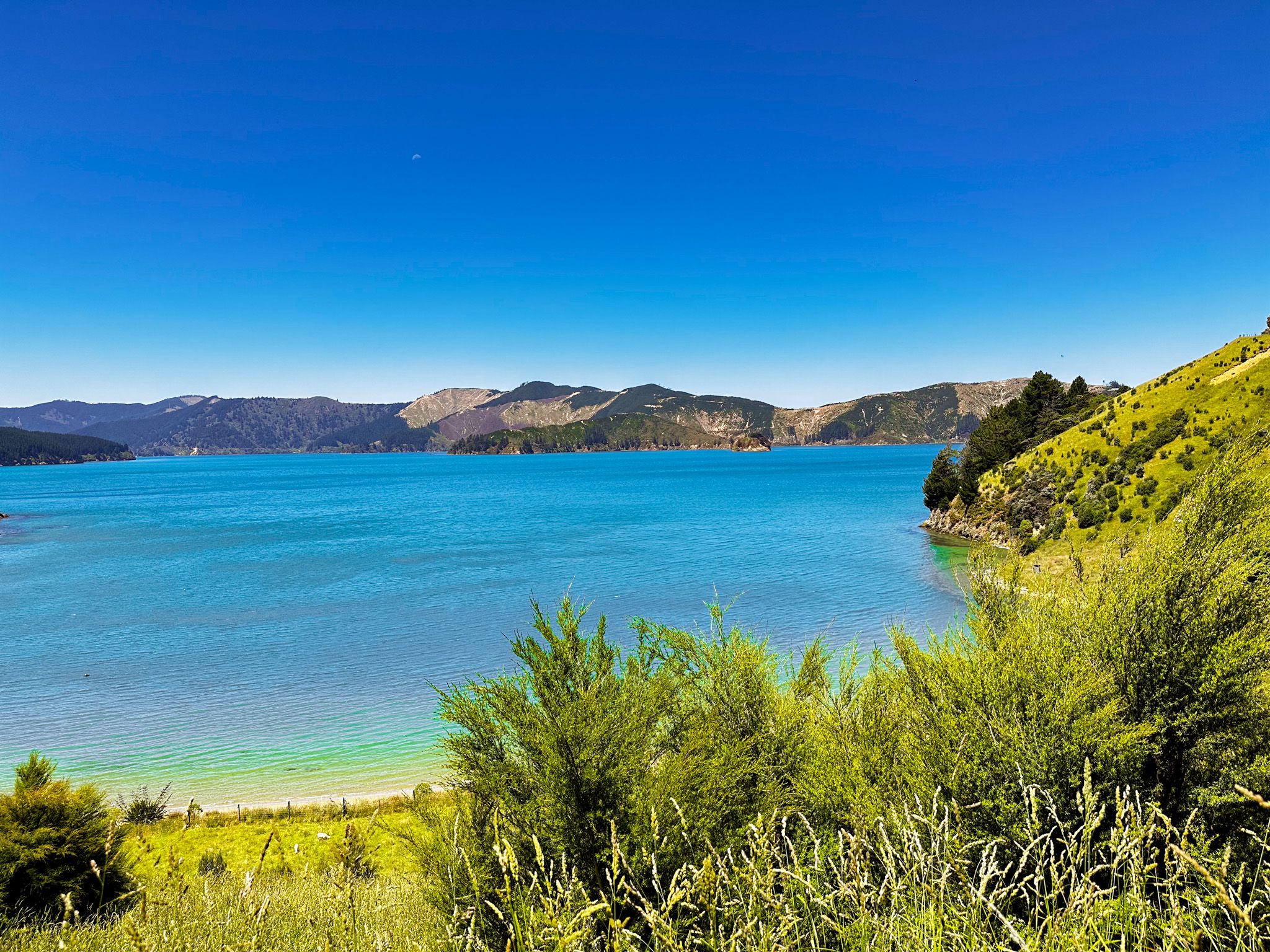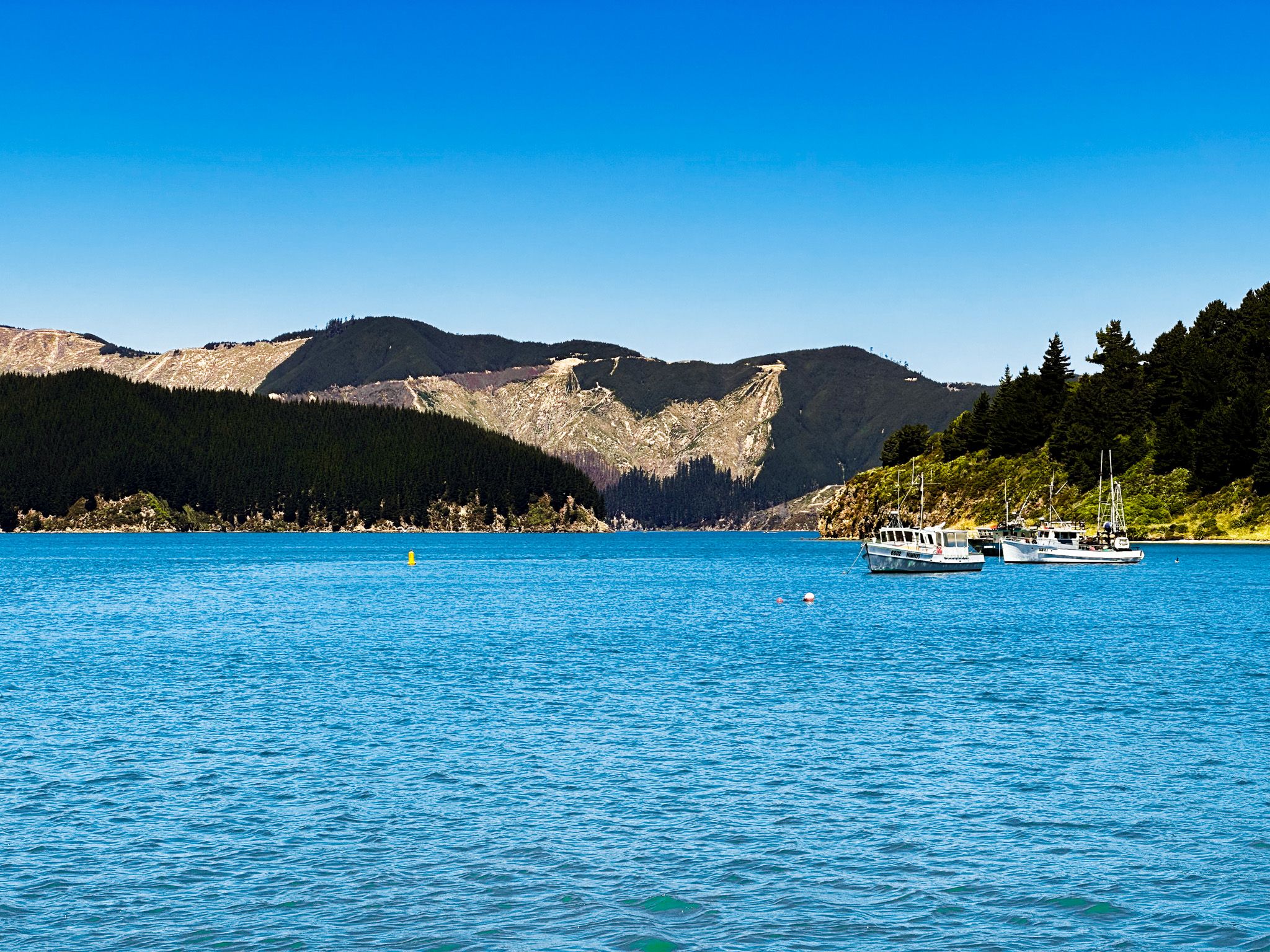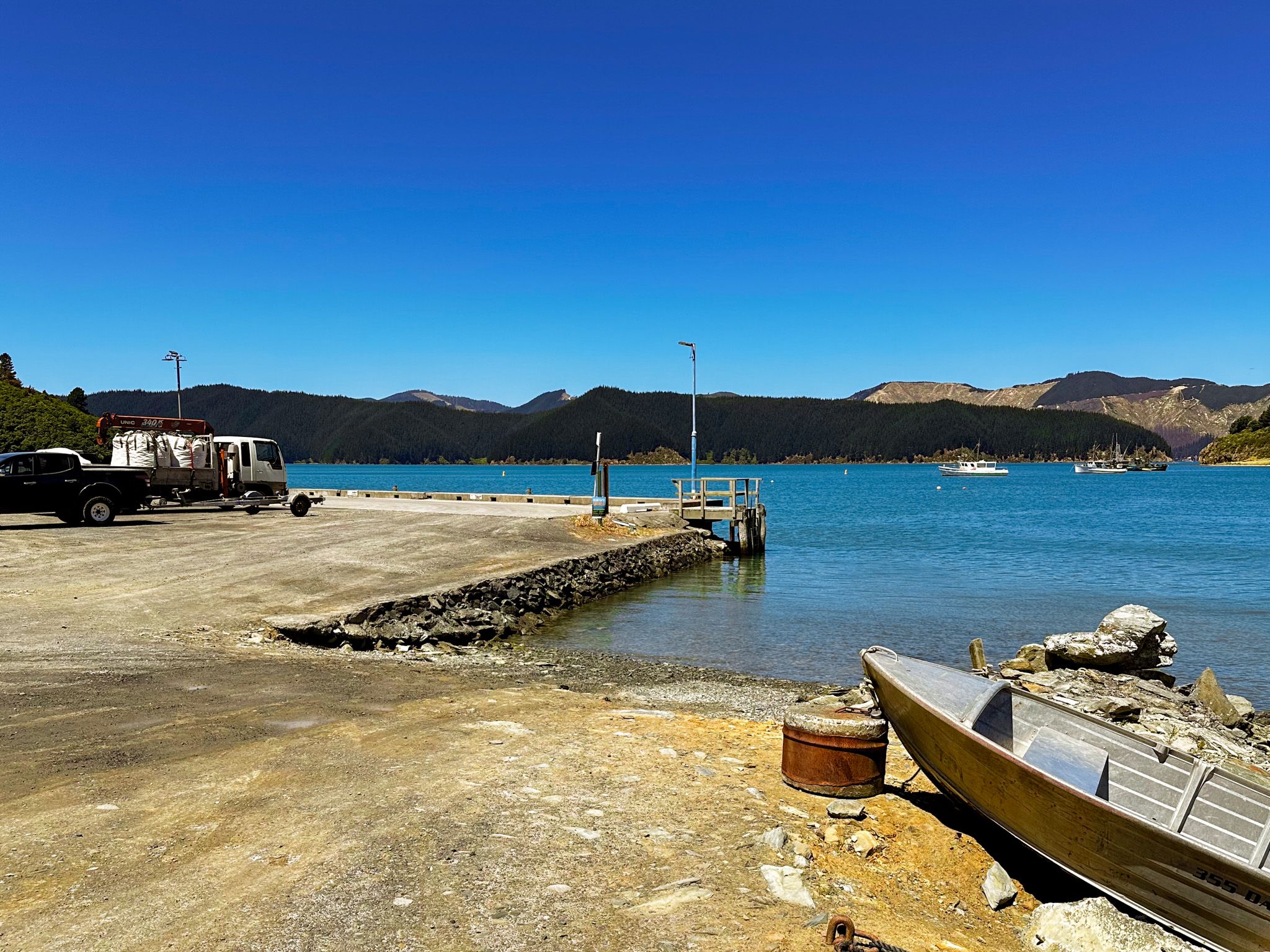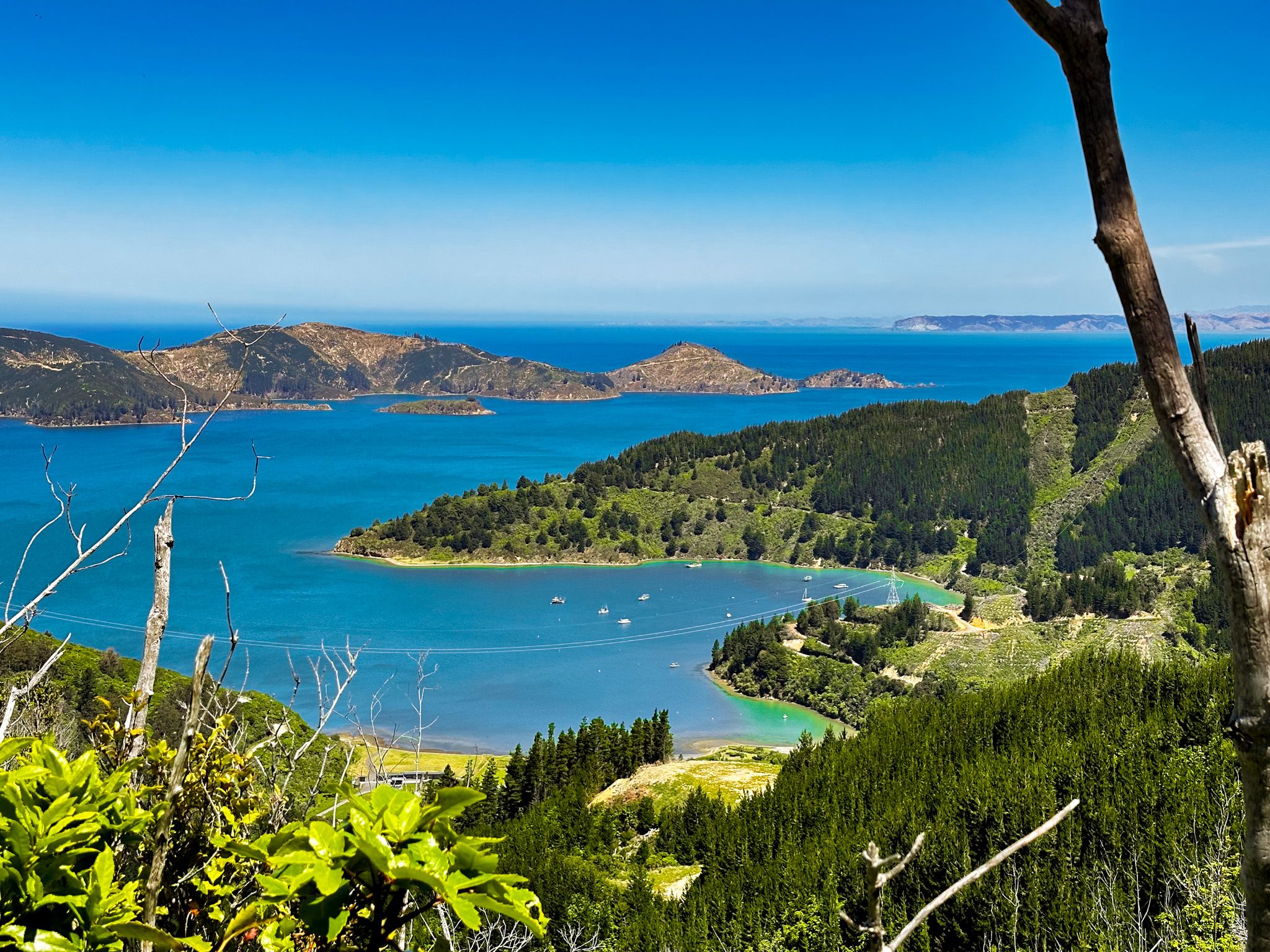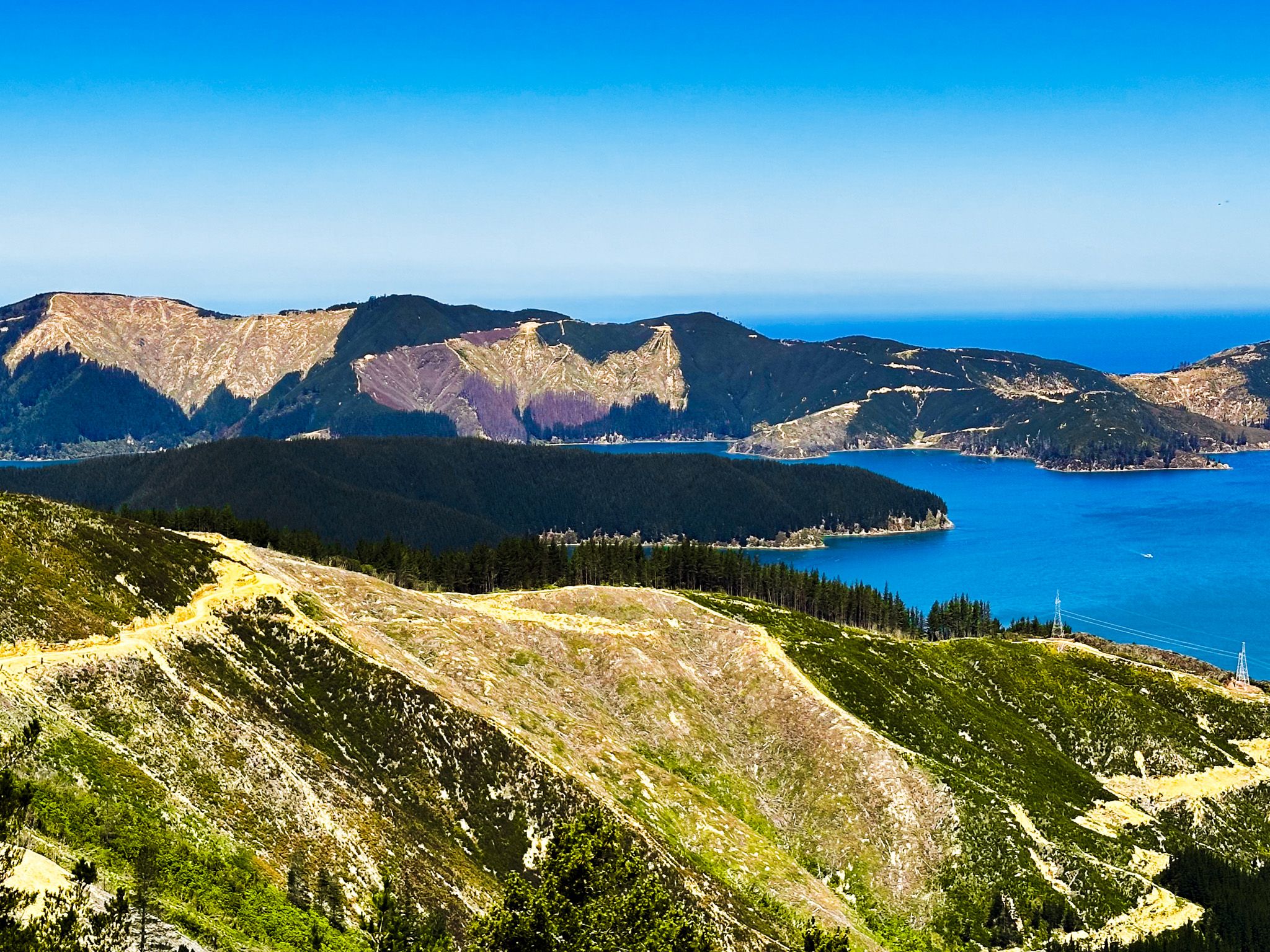Whanganui / Port Underwood is a large sheltered inlet off Cook Strait that marks the southeast side of the Marlborough Sounds. It can be accessed on Port Underwood Road or by boat. The European name was for Joseph Underwood of the shipping firm Kabel and Underwood, although his specific connection with the place seems unclear. The Māori name was restored with the Treaty of Waitangi settlement of 2014, which resulted in widespread restoration of Maori names around the sounds.
Before Europeans arrived, there was a long history of Māori occupation in Port Underwood. But in the 1820s, the local Rangitane iwi was defeated by Te Rauparaha as part of his invasion of the South Island during the Musket Wars. Te Rauparaha also had an eye for commercial opportunities with early Europeans, and sealers and whalers were there by 1826.
John Guard, one of the first Europeans to father a European child in the South Island, set up a whaling station at Kakapo Bay in 1828. Port Underwood was especially rich in southern right whales, and by 1840, there were several whaling stations around the inlet and 150 Europeans. This may have been the largest group of Europeans in the South Island. Whaling was intense, with multiple boats competing to catch the same whale. Not long after that, the NZ whaling industry largely collapsed, and eventually, whales became functionally extinct in the inlet.
However, Port Underwood has continued to be an area of quite intense commercial use. Much of it is covered in commercial exotic pine forests, the effects of which include a denuded landscape as trees are harvested. Many east-side bays have mussel farms supported by boats at the Oyster Bay wharf. Still, Port Underwood contrasts sharply with other parts of the sounds that were either lightly touched or are being ecologically restored.
Despite its modern remoteness, Port Underwood also had an important moment of fame. On 16 June 1840, HMS Herald arrived with a copy of the Treaty of Waitangi. Māori chiefs signed it on small Horahora-Kākahu Island, which, at the time, was an important fortified pā site. A macrocarpa tree was planted in 1900, and a bronze plaque was laid down in October 1964 to mark the occasion. Today, it is back under the control of local Māori and is subject to ecological restoration. You can pick out the island from Tom Canes Bay, off Port Underwood Road, or visit it by boat.

